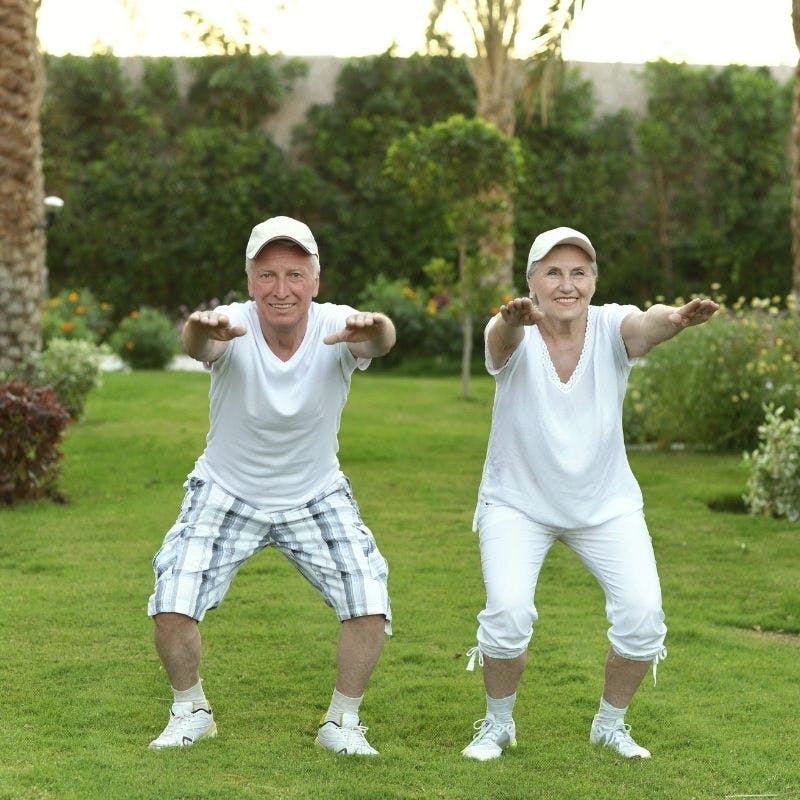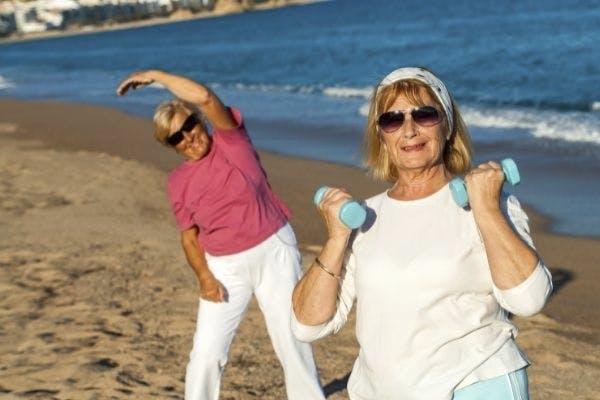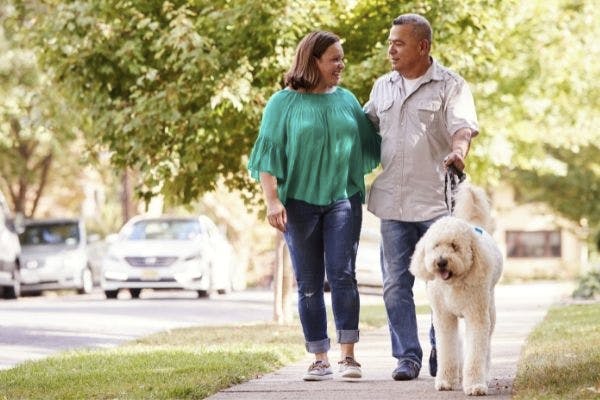
Exercise is important for people with arthritis because it increases their muscular strength and flexibility, improves their mobility, and helps them feel less pain and fatigue. People with arthritis may have trouble exercising, but they can overcome it. Persistence is important.
Exercise can help you reduce the symptoms of arthritis and the good news is you don’t have to strive to be an elite athlete. Even moderate exercise keeps you moving and helps reduce pain. The research is clear that movement is key to a healthy lifestyle, no matter your age. And, it’s never too late to start
Why exercise is vital
Exercise can help you improve your health and fitness, without hurting your joints. The benefits of exercise include:
- Strengthen the muscles surrounding your joints
- Maintaining bone strength
- Increase your energy and reduce fatigue
- Ensure you get a good night’s sleep
- Help you lose and/or control your weight
- Enhance your quality of life
- Improve your balance
Though you might think that exercise will make your joints even more painful and stiff, that’s not the case. Many people are surprised to learn that your joints can become more painful and stiff because of lack of exercise.
The reason why it’s important to strengthen your muscles is because doing so helps maintain the support for your bones. Weak muscles can lead to more stress on your joints.
It’s Best to Get an Okay from Your Physician
When starting any exercise program, it is best to check with your doctor to make sure you cleared to exercise. Our expert physical therapists can work with you to find the exercise plan that gives you the most benefit with the least aggravation of your joint pain. These exercises may include: range of motion exercises, strengthening exercises, aerobic exercise, and other activities. Our exercise programs are personalized for each individual and designed for success.
Range-of-Motion Exercises

These exercises will increase your range of motion and make you feel more flexible. You may be able to do these exercises daily. For instance, you may be able to raise your arms over your head and then roll your shoulders back and forth.
Strengthening Exercises
These exercises help you build strong muscles that help support and protect your joints. Weight training is an example of a strengthening exercise that can help you maintain or increase your muscle strength.
When starting a strength-training program, three days a week is the best way to get the most out of your program, but two days a week is all you need to maintain your gains.
Aerobic Exercise
Exercise helps you control your weight, improve your cardiovascular and brain health, and give you more energy. Aerobic exercises are the best type of exercise if you want to lose weight and improve your health.
Low-impact aerobic exercises, such as walking, bicycling, swimming, or using an elliptical machine, are easier on your joints than other aerobic exercises, such as running, jumping rope, or playing basketball, and are a good place to start.
Moderate intensity aerobic exercise is the safest way to lose weight and lower cholesterol. If you work out at least three times a week, it is probably best to exercise for only 30 or 45 minutes at a time. If you feel that you are not able to carry on a conversation while working out, it may be a good idea to slow down or even stop the exercise.

Additional Activities
No matter how small, any movement counts. Daily activities such as mowing the lawn, walking the dog, basic household activities can count.
Body awareness exercises can help prevent falls and improve balance, coordination, and relaxation. It is important to tell your physical therapist about any health condition, as some yoga and tai chi positions and movements can cause pain, but they can also prevent falls and improve balance.
A Few Tips to Protect Your Joints
Start slowly if you are just beginning your exercise routine. If you push yourself too hard, you can overwork your muscles and worsen your joint pain.
- Focus on Low impact activities. Stationary or recumbent bicycles, elliptical trainers, or swimming can help keep joints from getting stressed while we move.
- Heat Can Help. To reduce pain in your joints and muscles, apply heat, such as a warm towel or a hot pack. Should be applied for about 20 minutes.
- Go slowly. Exercise with slow and easy movements. If you feel pain, take a break. If you notice that your joints feel swollen or that they are red, slow down.
- Ice afterward. Apply ice to your joints, especially after activities that cause joint swelling
Trust your instincts and don’t exert more energy than you think your joints can handle. It’s important to ease into any exercise program as you continue to work out.Don’t overdo
You may feel some soreness in your muscles after you exercise for a while if you haven’t been exercising for a while. If you are sore for more than two hours after your exercise, you probably exercised too strenuously. Talk to your physical therapist about what kind of soreness is normal and what soreness is a sign of something more serious.
If you’ve been diagnosed with rheumatoid arthritis, talk to your doctor about whether you should exercise while you experience joint flares. For instance, you might be able to do only range-of-motion exercises to keep your body moving, or exercise in water to cushion your joints.
We are Here to Help
If you have failed PT elsewhere, not seeing improvements or reduction of pain in your current exercise program, or looking to get started and need a little help with setting up a program customized for your situation, give us a call today to schedule an evaluation. Or, if you aren’t sure about the direction you want to go and would like a bit of advice, we would be happy to provide you with a FREE 15-minute physical activity screen. To Sign Up Click Here.
